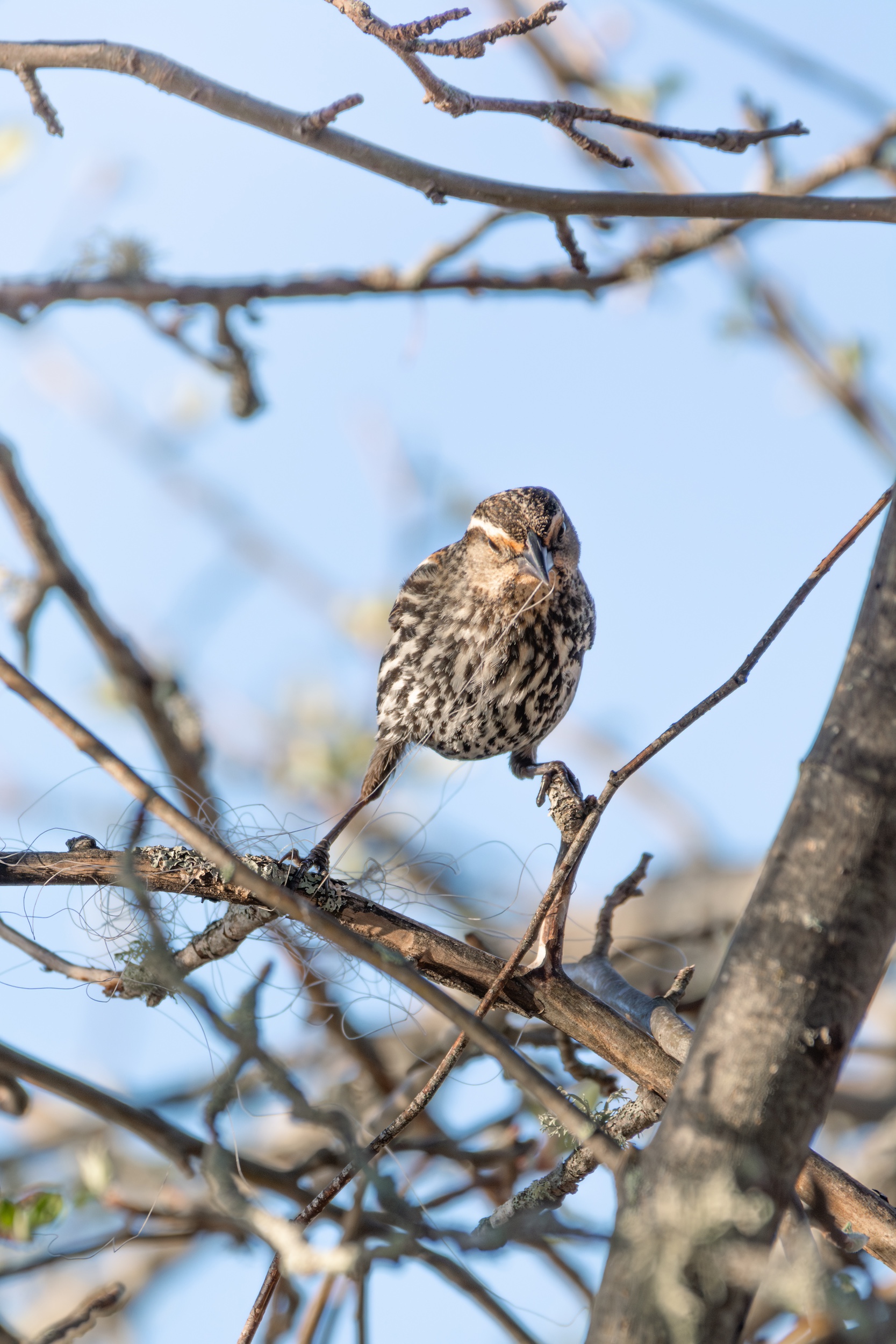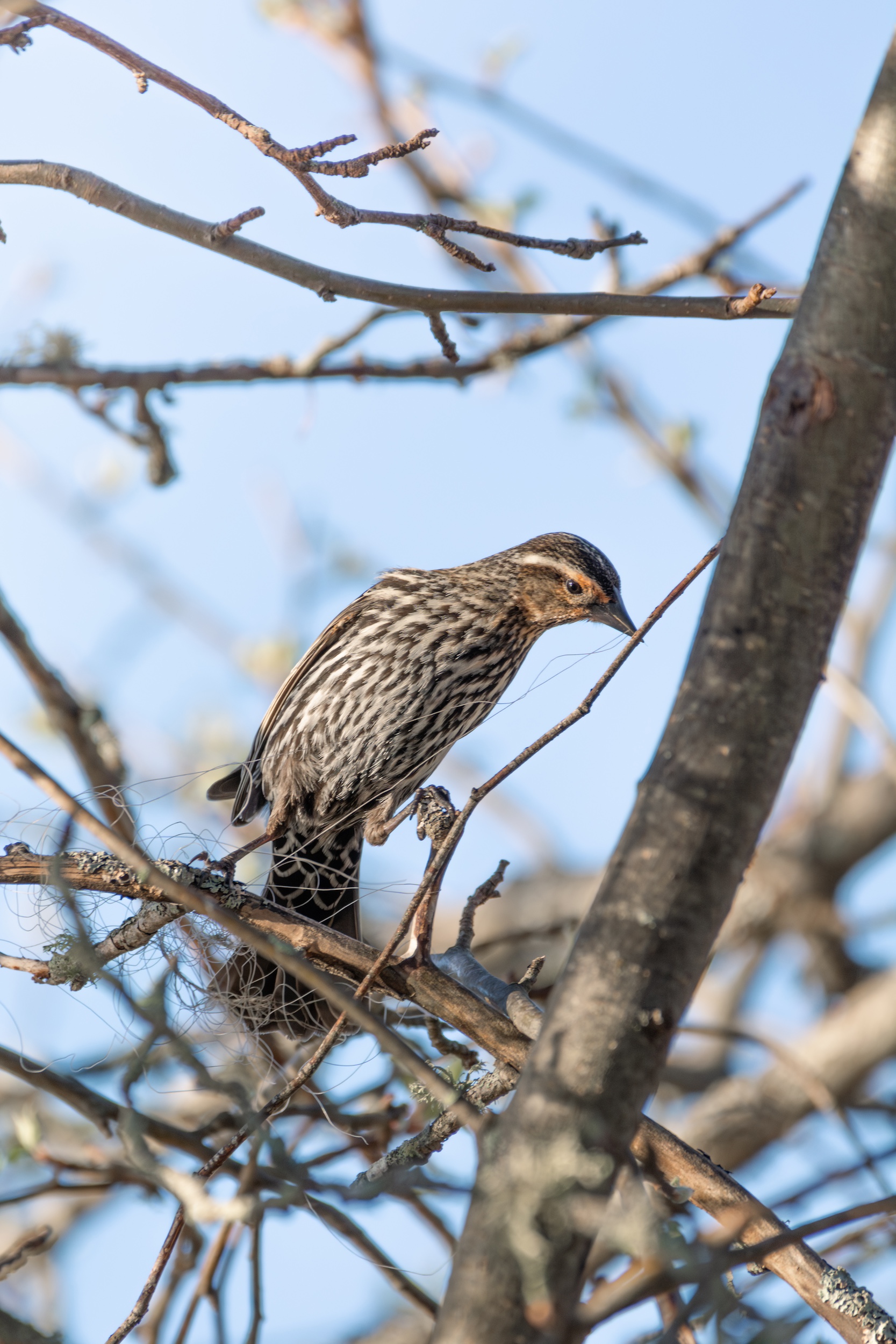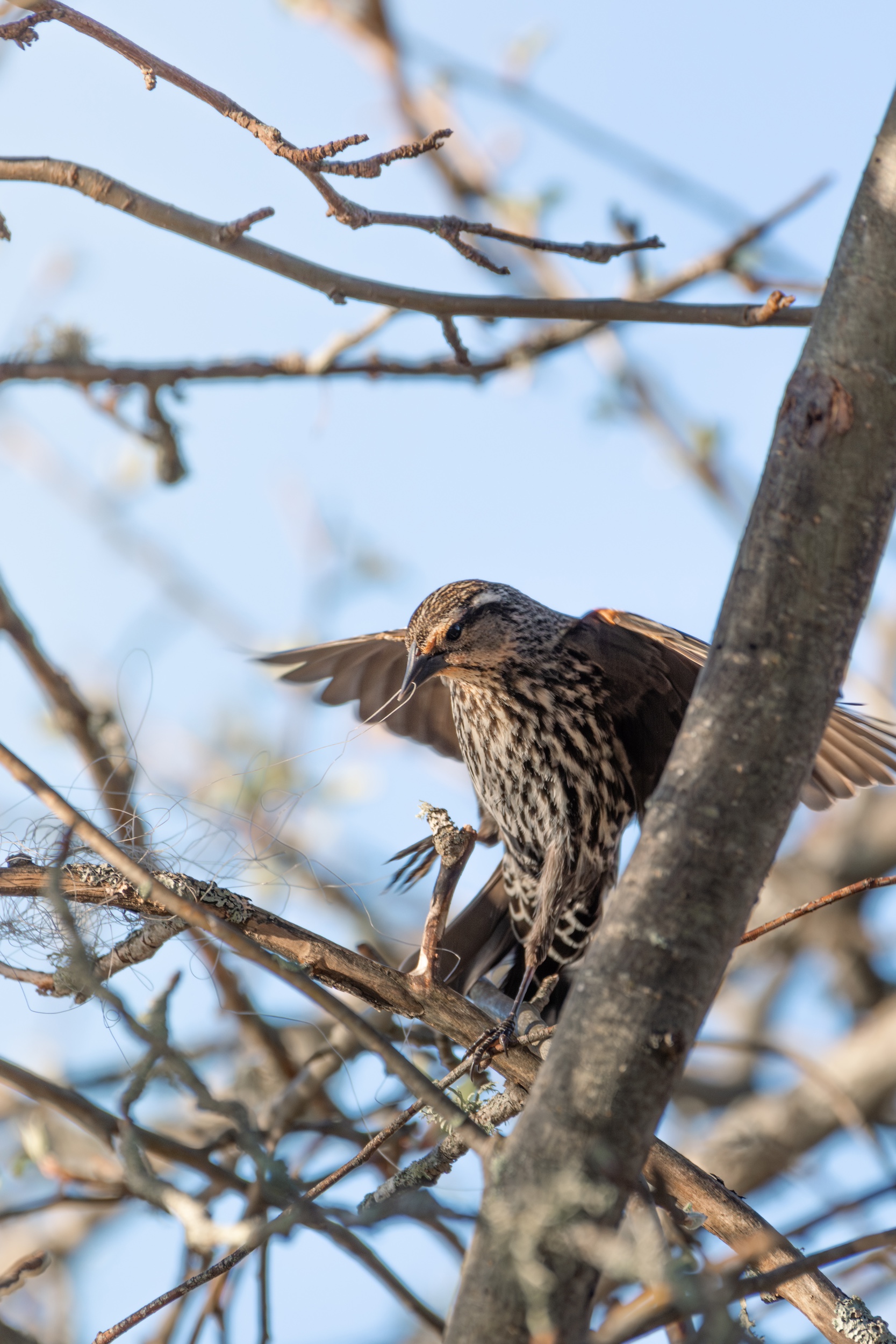A few weeks ago, I was photographing migratory birds at Killarney Lake when I noticed one behaving oddly. It was fluttering erratically in a tree. Looking through my lens, I saw a red-winged blackbird trying to untangle fishing line to use as nesting material. Determined as she was, she eventually gave up unharmed. The incident made me reflect on angling’s impact on bird populations, inspiring this post.



Like any outdoor activity, angling has unintended environmental consequences. For one, birds and fishing gear don’t mix well. Discarded lines and hooks can entangle, wound, and kill birds. Lesser-known issues, like poisoning from lead sinkers and jigs, can be equally devastating. The good news is, there are simple steps anglers can take to help protect birds while still enjoying time on the water.
Discarded Fishing Line and Hooks
Discarded lines and hooks are a major problem for birds. Left behind, lines can entangle birds and hooks can cause severe injuries. Sometimes, as I witnessed, birds mistake fishing line for nesting material. When incorporated into nests, fishing line can ensnare and kill fledglings. It’s not just birds that suffer; mammals, fish, and turtles also get ensnared and hooked.1 It’s so common the term “ghost fishing” has been coined to describe discarded fishing gear that continues to capture and kill fish and other organisms.1
What you can do: Many tackle shops and popular fishing spots have recycling bins for fishing line. If you can’t access them, wrap the line around your hand, cut through both sides, and throw it away. You can also use biodegradable fishing line made from plant-based polymers, which breaks down more quickly in the environment. It doesn’t eliminate the risk of ensnaring animals, but it does reduce it. Barbless hooks also reduce the risk of injury to birds, fish, and other wildlife.
Lead Sinkers and Jigs
Lead poisoning from sinkers and jigs is common in waterfowl. Loons, swans, cranes, pelicans, cormorants and other birds have all been documented eating them.2 It’s actually the leading cause of death for common loons in eastern Canada and the United States, surpassing deaths from entanglement in fishing gear, trauma, and disease.2 Consuming just one can be fatal. Lead sinkers have also been found in the digestive tracts of snapping and painted turtles.3
For this reason, many Canadian parks and wildlife refuges ban lead sinkers and jigs, but the problem persists. Each year, Canada’s roughly 3.3 million anglers replace 11 to 15 new sinkers and jigs, most of which contain lead.2 It is estimated that about 460 tonnes of them are lost in the environment each year!2
What you can do: Switch to non-lead alternatives such as tin, steel, bismuth, tungsten, rubber, ceramic, or clay.3 In Canada, the most commonly available alternatives are tin, steel, and bismuth.3 Unfortunately, all alternatives are pricier, with steel being the most affordable. Thankfully, some regions and organizations offer lead tackle exchange programs. Ottawa residents can receive $10 vouchers from Wild Birds Unlimited Kanata by dropping off lead tackle. You may find similar programs near you after a quick google search.
Habitat Destruction
Habitat destruction is another major issue for wildlife. When anglers trample shoreline vegetation and wade into streams, it can significantly alter habitats by destroying plants, nesting areas, eroding shorelines, and affecting the availability of food.1
Outboard motors are particularly damaging with their noise, exhaust, and propellers. In small inland waterways or near the shore, boats can make waves that erode the shorelines.1 This erosion can collapse banks and destroy riparian vegetation.1 Outboard motors can also disrupt benthic habitat which ducks and other waterfowl rely on for food.
What you can do: Be mindful of where you step. Stay on designated paths and avoid walking through sensitive areas. If you’re fishing from a boat, anchor away from fragile vegetation. Consider using a kayak or canoe. They have less impact on shorelines compared to larger boats. If you do use an outboard motor, try to minimize your speed and avoid shallow areas where the propeller can cause the most damage.
Ground Baiting and Chumming
Ground baiting and chumming involves scattering food to attract fish. Both can harm water quality by introducing excess nutrients leading to algal blooms, which deplete oxygen levels and harm fish and other aquatic life, including waterfowl.1
What you can do: Use these techniques sparingly and be aware of local regulations, many areas have restrictions on baiting and chumming.
What to Do if You Find an Injured Bird?
If you find an injured bird, contact a wildlife rehabilitation organization. Seek help for birds with visible injuries (e.g. bleeding and broken bones), illness (e.g. difficulty breathing, discharge from eyes or beak), inability to fly, or damaged feathers. If you find an unattended baby bird, assess the situation before intervening. Give the bird plenty of space and time for its mother to return. If the bird is fully feathered and hopping around, it’s likely a fledgling learning to fly and doesn’t need help. If you’re unsure, contact a wildlife rehabilitation organization for guidance.
Ontario Wildlife Rescue: 1-416-436-9892
British Columbia SPCA Wildlife Line: 855-622-7722
Nova Scotia Hope for Wildlife Helpline: 902-407-9453
New Brunswick Atlantic Wildlife Institute: 506-364‑1902
Manitoba Wildlife Haven Rehabilitation Centre: 204-878-3740
Wildlife Rescue Association of Saskatchewan: 306-242-7177
Wildlife Rescue Alberta: 403-946-2361
Le Nichoir in Quebec: 450-458-2809 ext. 1
Again, google search is an invaluable tool for locating organizations near you. Even if there is no wildlife rehabilitation organization nearby to collect the bird, one can still help guide you on next steps.
Anglers Can Help Protect Birds
I hope this post highlights the impact of angling on bird populations and offers solutions to mitigate these effects. In researching for it, I was shocked by the extent of the lead poisoning problem in waterfowl. I’ve noticed a concerning silence on our lakes. I used to hear loons often, and learning that their decline is partly due to preventable lead poisoning is both sad and shocking. I have even used lead sinkers before! I’m always hopeful that with education we can do better.
As always, I look forward to hearing from you in the comments section.
Other Posts You May Enjoy
Catch and Release: Minimizing Mortality in Bass
Why Do Birds Sing in the Early Morning?
Nuthatches: The Birds That Walk Upside Down
Sources
1 Steven Cooke and Ian Cowx. 2006. “Contrasting Recreational and Commercial Fishing: Searching for Common Issues to Promote Unified Conservation of Fisheries Resources and Aquatic Environments.” Biological Conservation.
2 Toxecology – Environmental Consulting Ltd. 2018. “Study to Gather Use Pattern Information on Lead Sinkers and Jigs and their Non-Lead Alternatives in Canada.” Environment and Climate Change Canada.
3 David Kirk, et. al. 2003. “Lead Fishing Sinkers and Jigs in Canada: Review of Their Use Patterns and Toxic Impacts on Wildlife.” Occasional Paper of the Canadian Wildlife Service.